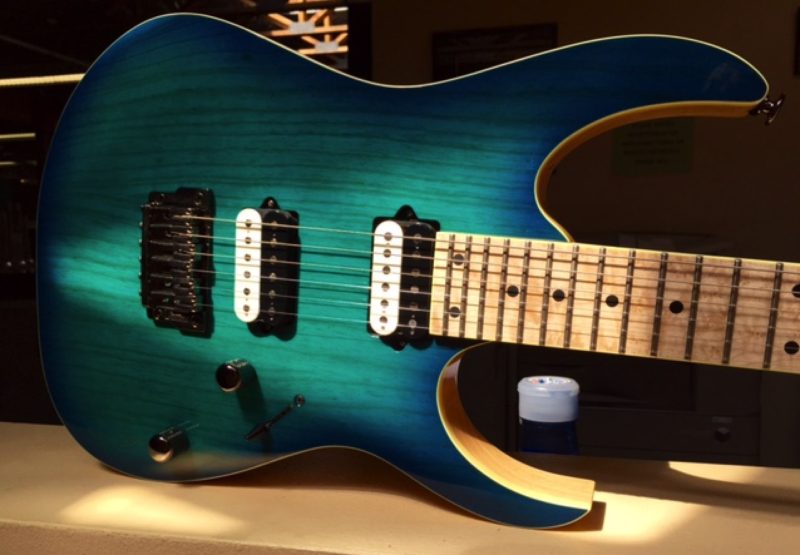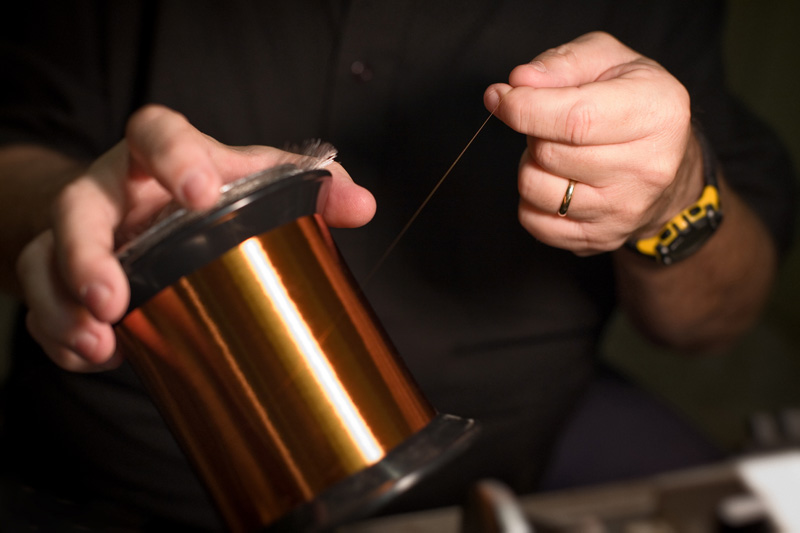Guitar Pickup Wire Specialists
Unique tones from unique wire.
Since the 1970’s MWS has supplied some of the world’s top guitar pickup craftsmen with wire custom made to order. Over the decades, we have produced thousands of variations at the request of customers. Although we offer options such as pure silver, copper is still the most popular.
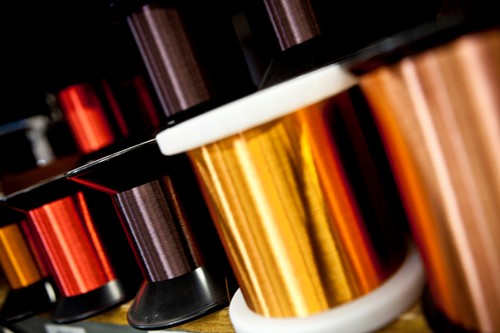
Popular insulation options include:
- Plain Enamel (PE)
- Polyurethane (P)
- Polyurethane Nylon (PN)
- Formvar (F)
Some of our customers go to extremes to produce a tone that is accurate to a particular era instrument. Others are the bleeding edge of new sounds yet to be discovered.
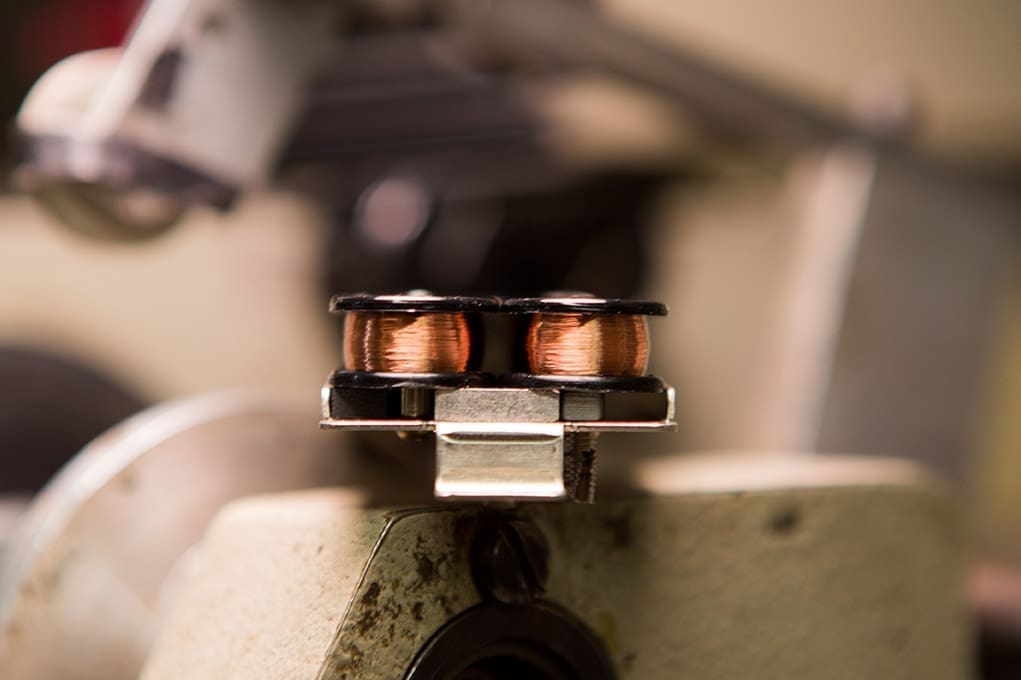
The Right Stuff
Variations in materials can have a huge impact on a pickup’s sound. The gauge of the wire, its insulation type and thickness and the purity and flexibility of the copper all influence the tone in subtle yet important ways. For example, Seymour Duncan’s Custom Shop uses a wide variety of wire gauges in their pickups, most frequently in the 41 to 44 AWG range. This wire usually starts out as 3/8th inch copper rod as thick around as your pinky. Then it’s drawn through diamond dies again and again until it’s approximately the thickness of a hair on your head. Over the years Duncan and his VP of Engineering & Product Development, Kevin Beller, have determined which gauges are most conducive to certain tone categories. For example, two pickups can have an identical number of turns and identical magnets. But by using a different gauge of wire, one can have a little fatter sound while the other is smoother on the top end.
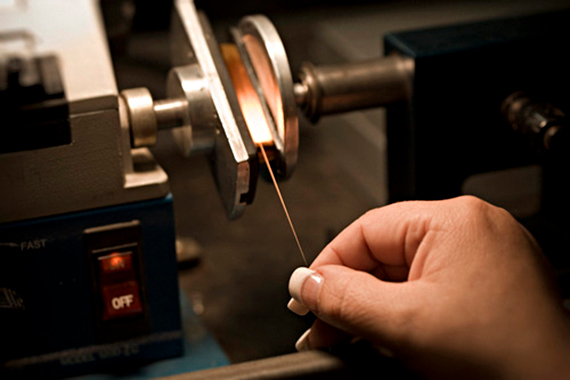
Insulation has a major effect on a pickup’s sound. There are at least 18 different types of wire insulation: polyurethanes, nylons, poly-nylons, polyester, and to name a few. Pickup makers have learned how to use different types of insulation to refine a pickup’s tonal response. For example, a wire with heavier insulation can be used to maintain more high-end detail.
Period-accurate wire is used in all vintage-style pickups. One popular vintage-style insulation is Formvar, which was used on old Strats and on some Jazz Bass pickups. But what the insulation vintage buffs know best is plain enamel, with its blackish-purple coating. Plain enamel wire was common in the ’50s and into the ’60s before the new insulations had been invented. It was used in all the old Gibson P.A.F.s, and many of the earlier Fender instruments
Supporting Craftsman Worldwide
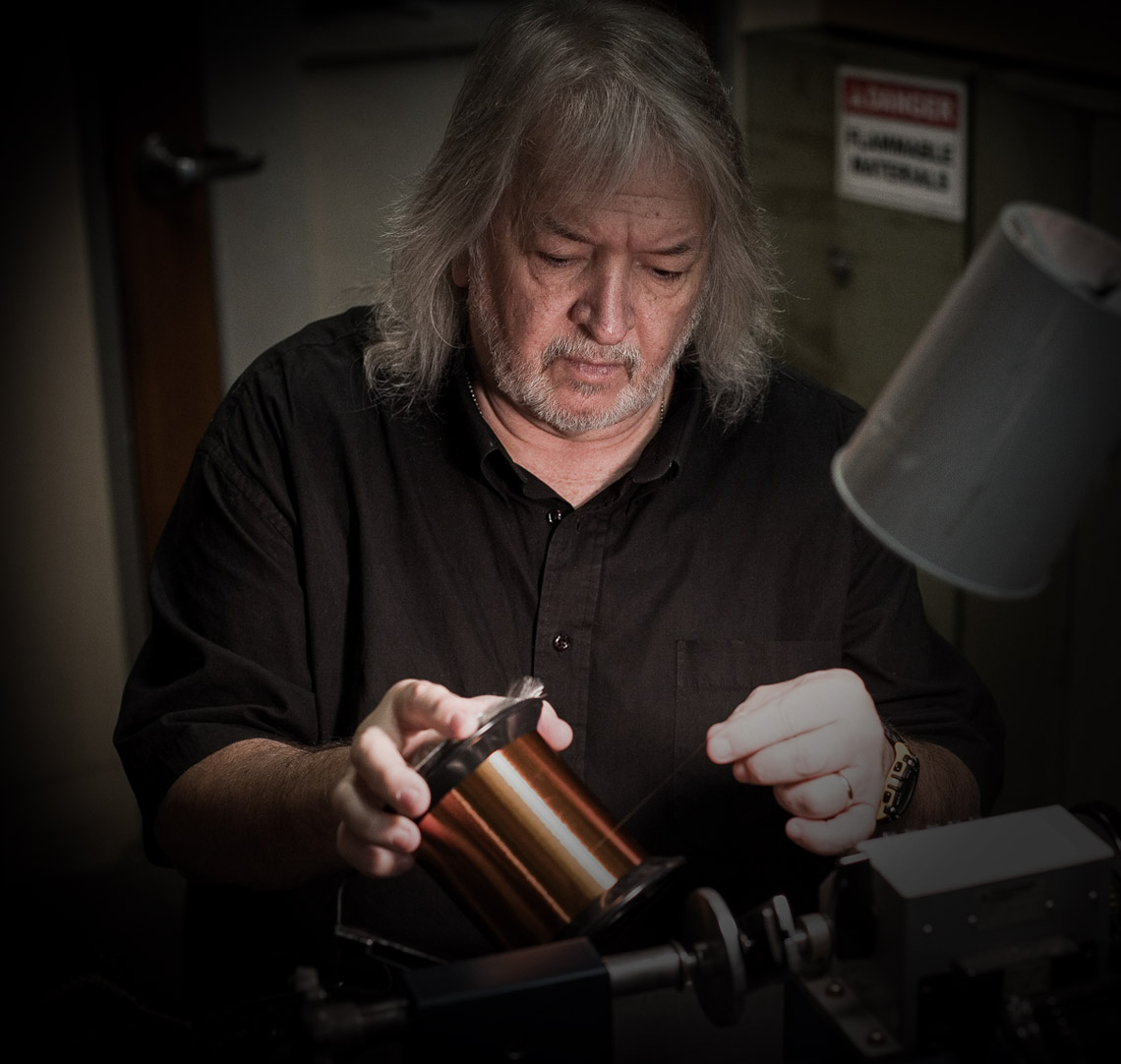
MWS Wire holds the distinction of supplying specialty wire to some of the world’s most respected pickup makers. Our willingness to provide excellent quality, even in small quantities, has enabled us to form many long-standing relationships with the likes of Seymour Duncan and his Custom Shop in Santa Barbara, CA, who has provided custom pickups for the likes of Jimmy Page, Mark Knopfler, Eddie Van Halen, Steve Miller, Joe Walsh, Joe Satriani, John Fogerty, Stevie Ray Vaughan, as well as for Tim Mills, founder of Bare Knuckle Pickups in the UK, who counts Geoff Whitehorn, Felipe Roa, Dave Bronze, Leah Woodward, Roman Subbotin, Steve Stevens and Johnny Marr among his many clients.
“Beyond copper, we use silver”
The Seymour Duncan Custom Shop Zephyr series was born from a challenge issued to VP of Engineering Kevin Beller to come up with a pickup that wasn’t constrained by the usual considerations of costs or materials: just dream it, design it and build it. The result is a tone with unprecedented treble clarity, vibrant harmonics and incredible dynamics, where your guitar simply feels like it has more of everything. More highs, fuller yet tighter lows, fatter mids and greater responsiveness.
“Unfortunately, it’s brutally expensive these days, but there’s a remarkable difference between the sounds of silver and copper,” admits Beller. “Pickups wound with silver wire have powerful dynamics, explosive attack, and a complex, harmonically rich sound while producing superior individual note definition and detail in chords. Silver is suppler than copper, so it winds a very nice and regular coil. I use silver when a customer requests it, or when someone wants to extend the pickup’s response at both ends of the sonic spectrum.”
Finding quality enamel wire
Today, there is little demand for plain enamel wire — except for those who are passionate about tone. It must be sanded by hand before it can be soldered, and not many companies want to add that extra labor. As a result, there are only a few companies who still make true plain enamel wire.
With so few manufacturers, quality control can be a real problem. So, Seymour Duncan’s Custom Shop buys from MWS Wire Industries, a company they have determined is the best at providing void-free, well-annealed wire.
“Whatever the wire type, we use vendors who care as much about quality as we do,” states Beller, “and we don’t mind paying extra to obtain wire that exceeds industry-standard tolerances. We test every case of wire that comes in. We measure the overall thickness to make sure it’s within spec, and we measure the resistance per foot down to three decimal places.”
Not just the wire, but the way you wind it
Voicing a pickup isn’t just a matter of selecting the right wire, insulation, and number of turns — how you lay the wire is at least as important. Among other things, this determines the pickup’s distributed capacitance, which refers to the air space formed between the layers as the coil is wound. This property affects the resonant frequency of the coil and dictates the high-frequency roll-off point, so it’s one of the factors that allows for fine-tuning a pickup’s high-end response.
The winding technique helps determine each pickup’s “voice.” It’s a delicate balancing act of tonality, a constant give-and-take controlling the complex interaction of wire type and one of three winding techniques:
- Machine Winding – a machine spins the bobbin and moves back and forth at a regular pace, distributing the wire evenly across the bobbin.
- Hand Winding – a machine spins the bobbin, but the magnet wire goes through the hands of an operator who distributes the wire along the bobbin. This is how the earliest pickups were wound.
- Scatter Winding (Also called Random Wrap) – a machine spins the bobbin, and the magnet wire goes through the hands of an operator who distributes the wire along the bobbin in an intentionally scattered or random pattern.
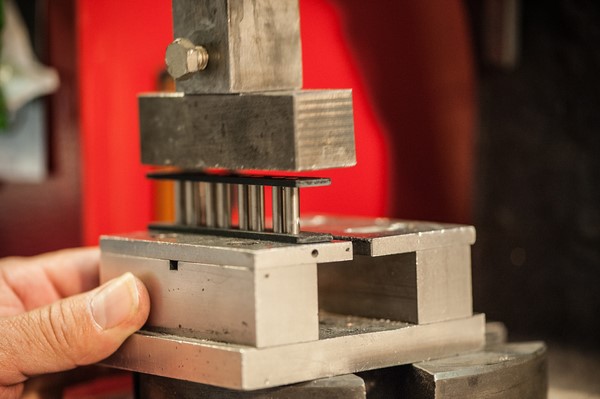
Each technique has its pluses and minuses. Machine winding can be controlled with wire gauge, bobbin size, tension and pattern, and like any formula, if you know what you want, a machine-made pickup from a reputable maker can give it to you … and the next guy. Hand winding emulates machine winding by attempting an even distribution of wire and tension in the coil. The anomalies created by human intervention can create just that. Anomalies: both wanted and unwanted. Scatter winding gives every pickup a unique sound. The tension of the wire is purposely varied as it moves through the operator’s fingers, reflecting the ability to control the tension within the coil by the person winding the pickup. The result is a clearer, more open tone that has the impression of being louder purely by the amount of extra detail and dynamics present. But this technique can generate unwanted side effects in the tone. A scattered or random winding may exhibit a propensity towards introducing more unwanted micro phonics (undesired electrical signal noise) as opposed to a neatly-wound version. This is because with a neatly wound model, the wires land next to each other in an orderly pattern and would be less likely to move around with vibration. Forums on guitar pickups seem evenly pitched on machine wound vs.scatter wound.

